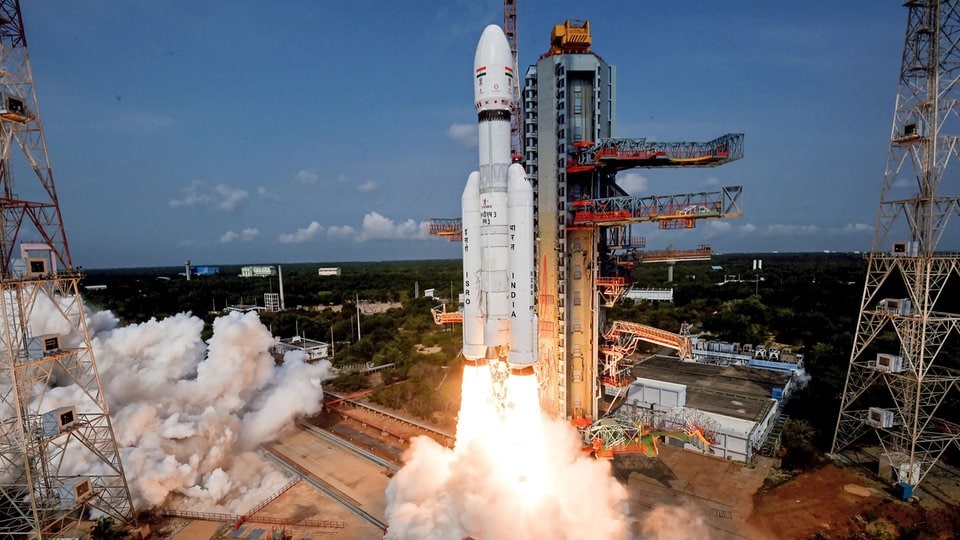India goes to the moon again. This time, the Chandrayaan 3 mission will land a lander and rover on the lunar surface. The last mission has failed. Will the moon landing succeed this time?
On July 13, 2023, India wants to send another spacecraft to the moon and it is expected to land on the moon on August 24, 2023. It will be the second landing attempt after the second failed Chandrayaan mission in 2019.
Chandrayaan-3: India’s Journey to the Moon
“We know how to fly to the moon. We just have to learn how to land. It should be flawless as far as we know and believe,” Sridhara Panicker Somanath told News X a year ago. Sumanath is the head of the Indian Space Agency, ISRO.
Image copyright: ISRO
The mission is scheduled to launch from India’s Satish Dhawan Space Centre. This is located in Sriharikota Island, South India. The LVM3 (Mark 3 Launch Vehicle, formerly GSLV Mk III) rocket is the launch of the spacecraft into space. The spacecraft is scheduled to reach the Moon on August 23 or 24, 2023.
Like the previous mission, this time it will be headed to a drop zone close to the poles. The landing site is located on the near side of the Moon between craters Manzinus C and Simpelius N. It can be found east of the Moon’s south pole.
India’s lunar lander will remain operational for 14 days
The duration of the mission is expected to last one lunar day – 14 Earth days – because the probe’s equipment is not designed for a lunar night, when temperatures drop to -160 degrees Celsius.
Image copyright: ISRO
Compared to the previous mission’s Vikram lander, some improvements have been made to this lander. The car now has several redundant instruments for measuring distance from the ground. In addition, the vehicle can better avoid obstacles in the final descent stage. In addition to the improved software, the landing legs of the lander have also been strengthened.
Chandrayaan-3 mission missions
Also on board is the small six-wheeled rover Pragyan, which weighs 26 kilograms. Its instruments will study the chemical composition of regolith (sand and lunar rocks) near the landing site, as well as analyze levels of potassium, aluminum, magnesium, silicon, calcium, titanium and iron.
The lander will also measure moonquakes with a seismograph and plasma density near Earth and its change throughout the day with the Langmuir probe. In addition, the thermal conductivity and regolith temperature can be determined with Chandra’s Thermophysical Experiment (ChaSTE).
In addition, Isro wants to test a new tool with its propulsion unit (the vehicle that takes the lander and rover to the moon). With Figure (Polarization Spectrometry of a Habitable Planet), the authority wants to know more about the composition of the atmospheres of future exoplanets. This task is designed to test shape using the Earth as a test object. The instrument will monitor our planet from orbit around the moon. Unlike previous missions, Chandrayaan 3 will not contain a new orbiter.
Will India become the fourth country on the moon?
If India succeeds in this lunar landing, it will be the fourth country to successfully land on a satellite. On February 3, 1966, the then-Soviet Union was the first country to successfully land on the moon with the Luna 9 mission. On June 2 of the same year, the United States safely and gently landed its Sirveyor-1 mission on the lunar surface.
Bildrecht: Luna 3-1 / Roscosmos
Space state of IndiaIn 1975, India launched the Aryapatta satellite, at that time with the help of a Soviet missile. The country launched its first light-to-medium-heavy cargo PSLV (Polar Satellite Launch Vehicle) launcher in 1994. A heavy-lift launcher followed in 2004 with the GSLV (Geosynchronous Satellite Launch Vehicle). With the Gaganyaan mission in 2025, the first astronauts will be brought into space with their own spacecraft. India will be only the fourth country after Russia, the United States and China to achieve this level of space travel. With the Mars Orbiter Mission (MOM), India is also represented by a space probe in the orbit of Mars until the end of 2022. However, during the first moon landing in 2019, the Vikram lander of the Chandrayaan-2 mission failed. The Chandrayaan-2 orbiter remains active in lunar orbit and is expected to remain operational until 2027.
After the last of NASA’s Apollo missions in the 1970s, things were quiet around the Moon for a long time. It wasn’t until 2013 that China’s Chang’e-3 mission landed safely. The first commercial lunar landing in March 2023 with the Japanese mission Hakuto-R failed. But other private companies would like to land on the moon in the next few years, such as Astrobotic or Intuitive Machines. But both American companies have repeatedly had to postpone their lunar plans. Neither of them will go to the moon before the end of 2023.
Starting in 2025, NASA, together with SpaceX, can return people to the moon. So Trabant will remain a space travel target for the next few years.
view all
view all

